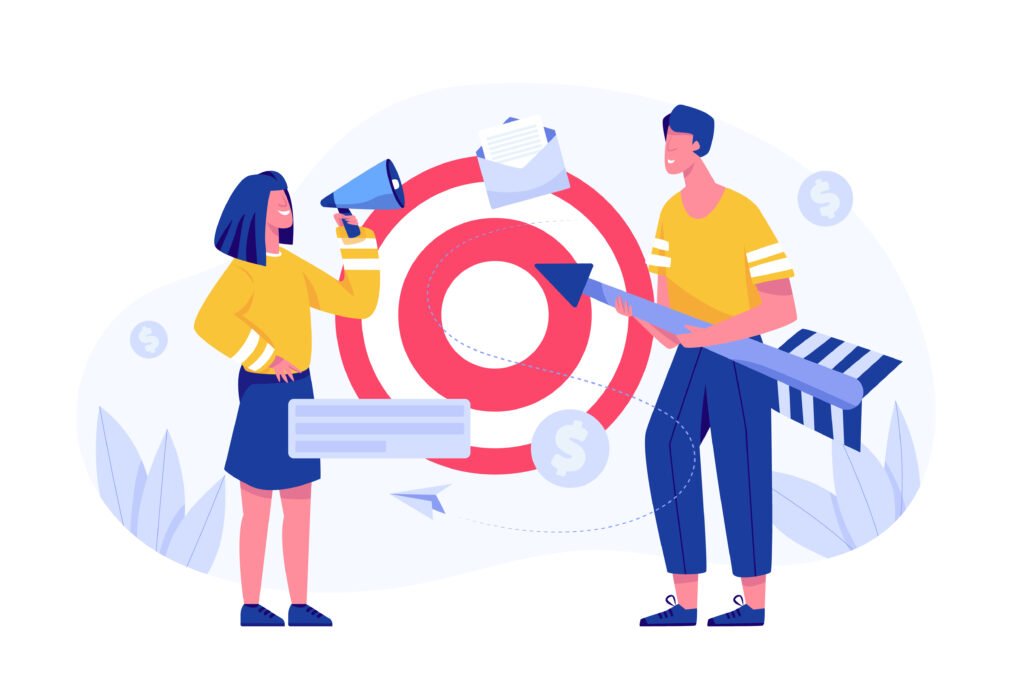
In today’s fast-paced digital landscape, businesses are continually exploring innovative methods to attract and maintain the interest of their target audience. A tactic that has garnered considerable momentum is trigger marketing. This powerful approach involves strategically timed and personalized Communications initiated by particular customer actions or behaviors.
This extensive guide thoroughly covers trigger marketing, including its definition, types, benefits, implementation strategies, FAQs, and conclusion. Join us as we uncover the strategy for harnessing trigger marketing’s immense potential to drive your business’s success.
What Is Trigger Marketing?

Trigger marketing is a strategic approach that involves sending personalized messages or marketing materials to individuals based on particular triggers or actions they’ve performed.
These triggers can be various customer behaviors, such as website visits, email opens, purchases, downloads, or interactions with social media posts. Trigger marketing aims to deliver relevant and timely content to customers, increasing engagement, driving conversions, and fostering customer loyalty.
Types Of Triggers
Businesses can leverage several types of triggers in trigger marketing campaigns. These triggers are based on specific customer actions or behaviors and are used to initiate personalized communications or offers.
Here are some common types of triggers in trigger marketing:
- Behavioral Triggers: These triggers are based on customer behaviors like visiting websites, viewing pages, and clicking. On links, form submissions, downloads, or product views. For instance, a customer who leaves a shopping cart without completing the purchase may trigger sending a follow-up email with an enticing offer to motivate them to finalize their purchase.
- Transactional Triggers: These triggers are based on specific transactions or interactions with the business, such as purchases, sign-ups, account creations, or subscription renewals. For instance, a customer who makes a purchase may trigger a thank-you email with related product recommendations or a loyalty program invitation.
- Lifecycle Triggers: These triggers are based on where customers are in their lifecycle with the business, such as new sign-ups, birthdays, anniversaries, or milestones reached. For example, a new subscriber may trigger an introductory email series familiarizing them with the brand and its products.
- Engagement Triggers: These triggers are based on customer engagement levels, such as email opens, clicks, social media interactions, or survey responses. For instance, a customer who clicks on a specific product category in an email may trigger a follow-up email with related products or a personalized discount.
- Time-based Triggers: These triggers are determined by particular time intervals or events, such as holidays, seasons, special promotions, or recurring events. For example, a holiday sale event may trigger promotional emails leading up to the sale period.
Benefits Of Trigger Marketing

Trigger marketing offers a range of benefits that can significantly impact a business’s marketing efforts and overall success. Here are five critical benefits explained in detail:
- Personalization and Relevance: Trigger marketing allows businesses to deliver highly personalized and relevant customer messages based on their specific behaviors and interests. By segmenting customers and triggering tailored communications or offers, companies can create a more personalized experience that resonates with customers and increases engagement. For example, sending a customized birthday discount to customers based on their birthdate makes them feel valued and increases the likelihood of purchasing.
- Timely Communication: One of the significant advantages of trigger marketing is its ability to deliver timely messages to customers at the right moment. By setting triggers based on specific customer actions or events, businesses can send messages when customers are most receptive, increasing the chances of driving conversions. For instance, sending a reminder email to customers who have abandoned their carts can prompt them to complete their purchase while the product is still at the top of their minds.
- Increased Conversions: Trigger marketing has been shown to boost conversion rates compared to traditional marketing approaches significantly. By delivering targeted messages or offers to customers based on their behaviors, businesses can nudge them towards taking desired behaviors like purchasing, subscribing to a service, or interacting with content. For example, sending a personalized discount offer to customers who have shown interest in a particular product category can encourage them to make a purchase they might have otherwise hesitated.
- Enhanced Customer Experience: Trigger marketing enhances customer experience by offering relevant and valuable content or deals that meet customers’ needs and preferences. This personalized approach shows that the business understands and cares about its customers, leading to increased satisfaction and loyalty. For instance, delivering product suggestions according to previous purchases or browsing history can help customers discover new products they are likely interested in, enhancing their overall shopping experience.
- Optimized Marketing Spend: Trigger marketing helps businesses optimize their marketing spend by focusing resources on customers most likely to convert. Rather than blanket marketing to a broad audience, trigger marketing allows businesses to target high-potential customers precisely, maximizing the return on investment. Companies can allocate their budget more effectively and achieve better results by identifying and prioritizing triggers that drive meaningful interactions and conversions. For example, retargeting website visitors with solid purchase intent with targeted ads can lead to higher ROI than generic advertising campaigns.
Having covered the definition, types, and benefits of trigger marketing, let’s now delve into the practical application of utilizing trigger marketing strategies.
How To Use Trigger Marketing?

Gain Insight Into Your Target Audience
This entails conducting comprehensive research and analysis to acquire deep insights into your target audience’s characteristics, preferences, behaviors, and needs. By creating detailed buyer personas, you can effectively segment your audience and customize your approach to trigger marketing campaigns to specific segments.
This understanding enables you to deliver Tailored, Customized messages that resonate with your audience, enhancing engagement and conversions.
Create Conditional Triggers
This approach involves setting up conditional triggers based on specific customer actions or events (‘if’), triggering corresponding responses or actions (‘then’). For example, if a customer abandons their cart, send a subsequent email containing an exclusive discount offer.
By mapping out these conditional triggers, you can automate responses and deliver timely, targeted communications that guide customers’ journeys and drive desired outcomes.
Identify Triggering Events
This step involves identifying the specific customer behaviors or events that indicate intent or interest, such as website visits, form submissions, purchases, or email interactions.
These triggering events are cues for initiating relevant and timely marketing actions, such as sending targeted messages, offering personalized recommendations, or providing incentives to encourage desired behaviors.
Define System Actions
This involves defining the automated responses, messages, offers, or tasks your marketing system will execute when specific events or customer behaviors are triggered.
For example, you are setting up an automated email sequence for new subscribers or triggering personalized product recommendations based on browsing history. Clearly defining these actions ensures consistency and efficiency in your trigger marketing campaigns.
Craft Personalized Messaging
Personalization is critical in trigger marketing. Create messages that align with the interests of each segment of your audience audience, addressing their specific needs, interests, and pain points.
Use dynamic content, recommendations, and tailored offers to create a customized experience that encourages engagement and drives conversions. Personalized messaging builds rapport with customers and enhances the overall effectiveness of trigger marketing campaigns.
Automate Repetitive Tasks
Leveraging automation tools and workflows helps you eliminate manual, repetitive tasks in your trigger marketing efforts. By automating processes such as email sends, follow-ups, lead scoring, and data updates, you can save time, reduce errors, and ensure consistent execution of your marketing strategies. Automation also enables you to concentrate on strategic decision-making and optimizing campaign performance.
Enhance CRM Value
By integrating trigger marketing with your Customer Relationship Management (CRM) system, you can leverage customer data to its full potential. Use trigger events to update customer profiles, track interactions, and segment audiences dynamically based on real-time behaviors.
This enhances the value of your CRM by providing actionable insights, improving customer engagement, and driving targeted marketing efforts that align with your business goals.
FAQs
Q1. What Is Trigger Marketing?
A. Trigger marketing is a strategy that sends personalized messages triggered by particular customer actions or occurrences, aiming to enhance engagement and drive conversions.
Q2. How Does Trigger Marketing Benefit Businesses?
A. Trigger marketing enables businesses to deliver timely, relevant, and personalized communications, leading to increased conversions, improved customer experience, and optimized marketing efforts.
Q3. What Are Some Common Triggers In Trigger Marketing?
A. Common triggers include customer behaviors like website visits, email opens, purchases, cart abandonment, and interactions with marketing content, which prompt automated responses or offers tailored to individual customers.
Conclusion
Armed with a comprehensive understanding of trigger marketing strategies, there’s no need to delay. Implement these strategies today and witness their transformative impact on your marketing efforts.
Take charge to harness the power of personalized messaging, timely responses, and automated workflows to elevate your customer engagement, drive conversions, and achieve your business objectives. Don’t wait any longer; it’s time to level up your marketing game with trigger marketing!
However, if you still have any questions related to the blog, please feel free to leave them in the comment section below. We will be happy to answer them.
Thanks for reading 🙂








No Comments